-
Posts
2,123 -
Joined
-
Last visited
-
Days Won
3
Content Type
Profiles
Forums
Blogs
Gallery
Events
Store
Posts posted by Paul L Murphy
-
-
January 1931 certificate for the Hungarian War Medal with swords.
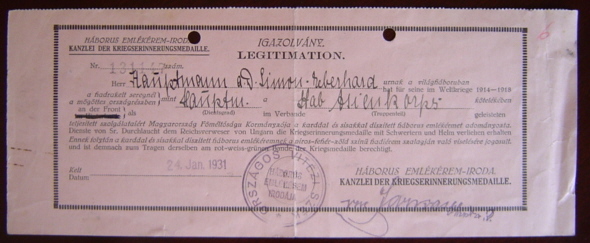

 0
0 -
Jumping ahead, his Combatant's Cross certificate issued to him in Shanghai in 1935.


 0
0 -
Next up, a rather crappy looking document confirming the following : -
Karl Eduard Medal on 31/7/1917
Iron Cross 1st Class on 3/5/1916
Hamburg Hanseatic Cross on 10/6/1917
Turkish Iron Half Moon on 27/8/1917
This document is to him in Feldartillerie Abteilung 701


 0
0 -
Third up, his Iron Cross 2nd Class awarded in the field in February 1916.


 0
0 -
Next up his Friedrich August Cross 1st Class. This appears to have been awarded in September 1916 for May 1915 ?? Rather strange that it was given to him before the 2nd class award ?
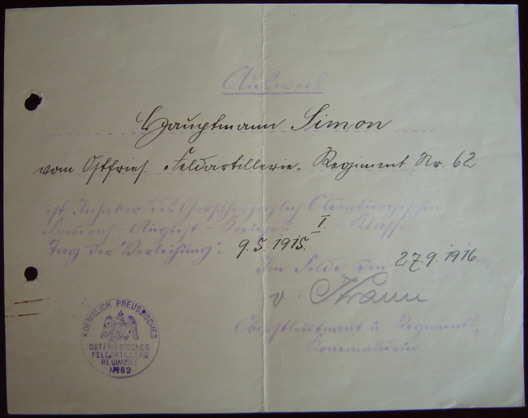

 0
0 -
I knew I had them somewhere. OK, here are the documents to Simon-Eberhard.
First up his 2nd Class Friedrich August Cross. Appears to be granted in October 1916 for December 1914, or am I misinterpreting it ?
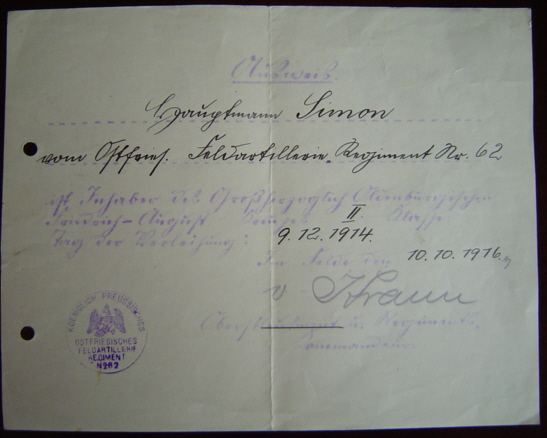

 0
0 -
OK, it is not Kite since he did not qualify for the IGS or the Italy Star (there is a photo of his medal group in Bate & Smith). However, there was a second person who received 3 MMs in WWII and that is CSM F L Dixon of The Essex Scottish, a Canadian regiment. The only problem with him is that this regiment does not appear to have served in North Africa or Italy since they were decimated at Dieppe (where he won his MM) and then landed in Normandy in July 44 (after which he won the two bars).




 0
0 -
Dan,
Many thanks



That explains what he was doing in Shanghai when he got the Combatant's Cross. I thought he might have been a military attache. A failing newspaper editor is far more interesting !
Regards,
Paul
0 -
Correct, it is also called the Nomohan Incident Medal. Your version is the more common large Kite version (it is a Kite not a Raven). There is very little difference between the two versions but the small Kite version is considerably scarcer.
0 -
Rick,
Let me see if I still have photos of the documents. I have them scanned and embedded into a word document so unless I have kept the original scans (which is 50:50) I may need to e-mail you the document with the embedded images since I do not know how to extract them and resave as JPEGS.
This group has been on my "to do" list for ages but I never got around to it. What you have found out so far is fascinating.
Cheers,
Paul
0 -
Japan does not but Manchukuo, which was a Japanese vassal state, does. It is called the Border Incident War Medal and was established in 1939 for service in the various clashes on the Amur River in 1937, Changkufeng Hill in July 1938 and Nomohan in 1939. Let me see if I can dig out a photo of it for you.
0 -
This rather impressive group (unfortunately photographed on black
 ) is one of my favourites. It was awarded to Artillery Captain Max Simon Eberhard and comprises the following : -
) is one of my favourites. It was awarded to Artillery Captain Max Simon Eberhard and comprises the following : -1914 IRON CROSS 1ST CLASS, OLDENBERG FRIEDRICH AUGUST CROSS 1ST CLASS, TURKISH STAR, 1914 IRON CROSS 2ND CLASS, SAXONY ALBERT ORDER KNIGHT 2ND CLASS WITH SWORDS, OLDENBERG FRIEDRICH AUGUST CROSS 2ND CLASS WITH ?VOR DEM FIEND? BAR, SAXE COBURG GOTHA SILVER KARL EDUARD MEDAL, HAMBURG HANSEATIC CROSS, WWI COMBATANTS CROSS, AUSTRIAN WWI WAR MEDAL WITH SWORDS, HUNGARIAN WWI WAR MEDAL FOR COMBATANTS, BULGARIAN WWI WAR MEDAL FOR COMBATANTS. MINIATURE VERSIONS OF LAST 10 MOUNTED ON BAR, MEDAL RIBBONS OF LAST 10 MOUNTED ON BAR.
I also have the following documents : -
FRIEDRICH AUGUST CROSS 2ND CLASS CERTIFICATE, FRIEDRICH AUGUST CROSS 1ST CLASS CERTIFICATE IRON CROSS 2ND CLASS CERTIFICATE, FIELD LETTER CONFIRMING FOUR AWARDS, WWI COMBATANTS CROSS CERTIFICATE (1 issued in Shanghai and 1 issued in Vienna), LEGITIMATION CERT.
1931.
Eberhard was a captain in the 701st Field Artillery Abteilung. So far I have not done any proper research on him but he has an impressive array of metal !
Regards,
Paul

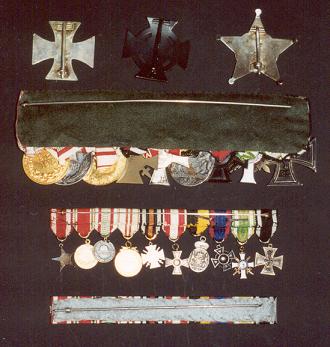

 0
0 -
Here is mine. My only Mongolian item so far (I bought it for the Japanese connection) but I can see myself approaching a slippery slope given how well made and attractive these are ..........



 0
0 -
This is one of my favourite Gramata certificates so far. The recipient was a Jewish female Lt Colonel in the KGB. What a combination ! What I like about this, apart from the nice backdrop of the KGB badge, is the fact that it is hand signed by V Kriuchkov, who became head of the KGB after Andropov. A nice signature to have.
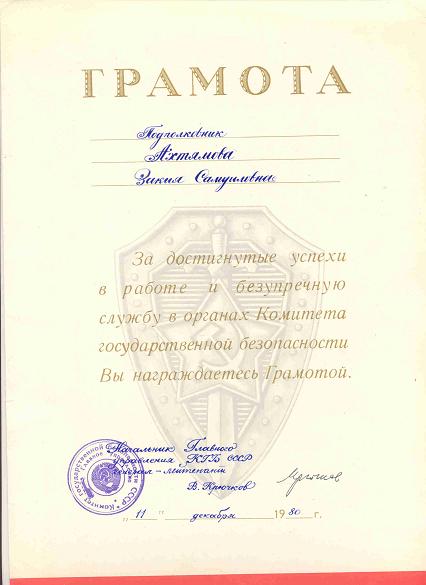
 0
0 -
This is an early piece with the drooped wings and the third feather as the longest feather on each wing. I would guess Sino Japanese War or Russo Japanese War at the latest. These are much more difficult to find than the later Showa period examples, at this stage the Golden Kite still meant a lot as a bravery award, equivalent to at least a Silver Star in US terms. After 1940 it effectively became the equivalent of the Purple Heart.
0 -
Yes, this is a Meiji period medal so I think it is safe to say that it does not go with the other items as part of a group. Even on its own it is still a nice early example of a 7th Class Golden Kite.
Best regards,
Paul
0 -
Well, the 225th Anniversary Badge that I saw was real, there were some of the Bolshoi staff wearing it when I was there a few nights ago. I managed to get the document, now to track down the badge again. The document is attached, a rather attractive piece.
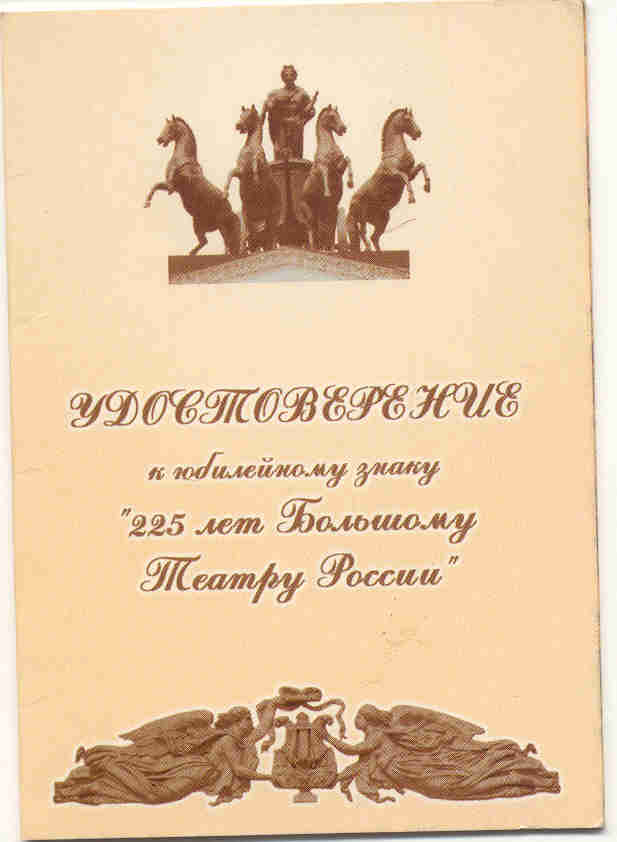
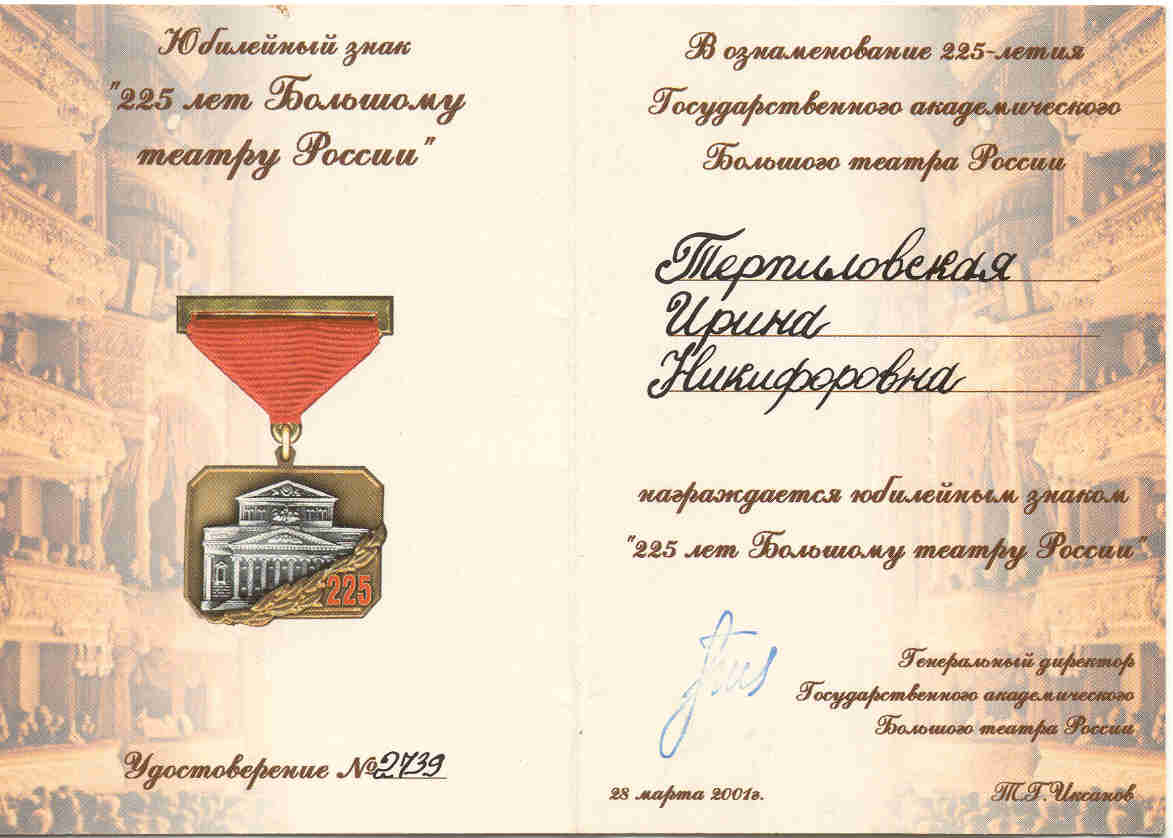

 0
0 -
Nothing wrong with confusion ! It is a wonderful state in which to find yourself. It is a crossed kukri and truncheon and may be police as you say. It certainly looks like the centre of the badge that you have posted. I presumed military since they are brass instead of white metal.
0 -
I have Brown's book on the DCM and Kite is not shown there so I presume it is not him. Your idea of the ISO is very interesting indeed, I never even tought of that.
0 -
The KPM is on the Meritorious Service ribbon, not the gallantry type. The problem I am having is that I cannot find anyone who won a DCM and three MMs !
0 -
Ed,
Good advice, my desire to visit Nepal has just increased ! I actually found these in a flea market in Tokyo, no idea what they were doing there. They have no maker marks on the reverse unfortunately.
Cheers,
Paul
0 -
The style of the lid inscription on Japanese award boxes changed over time and is one of the key ways in which you can date (roughly) the order concerned. The picture below shows from left to right the following : -
Showa period 4th Class Rising Sun
Meiji period 6th Class Rising Sun
Meiji period 7th Class Rising Sun
Meiji period 8th CLass Rising Sun
The very first character is key in determining the age of the lid, especially if you cannot read Japanese. You will see that all three Meiji period lids have a very curvasive first character, whereas the character on the Showa lid is very square and "blocked" in appearence. This character is the Japanese character which indicates that the number coming after it is an ordinal, ie. 1st, 2nd etc.
The second character on the lid is the class of the award. I will try to post all the numbers (1 to 8) as they appear on lids in a different thread.
The remaining characters are the name of the award. With the Rising Sun it is difficult since the name changes depending on the class, ie. 8th class is White Pawlonia Leaf Medal, 7th is Green Pawlonia Leaf Medal etc.
These inscriptions are not illustrated to size, apologies. In general for the non Japanese speaking medal collector the first two characters are what you need to focus on, the first to date the award and the second to know the class of award.
Regards,
Paul
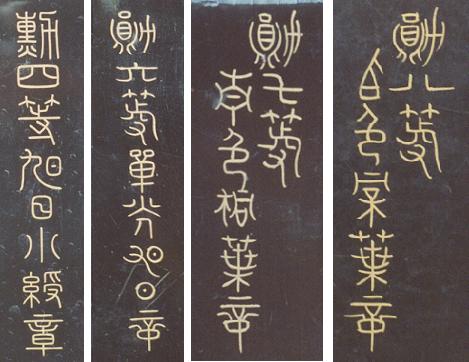
 0
0 -
I wonder if it is possible to find out if there are different patterns for officers & other ranks ??
0 -
I picked these up in a flea market and believe they are Nepalese army buttons. Can anyone out there confirm or deny this for me ?

Paul

 0
0




Max Simon Eberhard, one of my favourite groups
in Germany: Imperial: The Orders, Decorations and Medals of The Imperial German States
Posted
And finally a 1937 certificate for the Austrian War Medal with swords.
Apologies for not posting these earlier, I had forgotten where I had put the images.